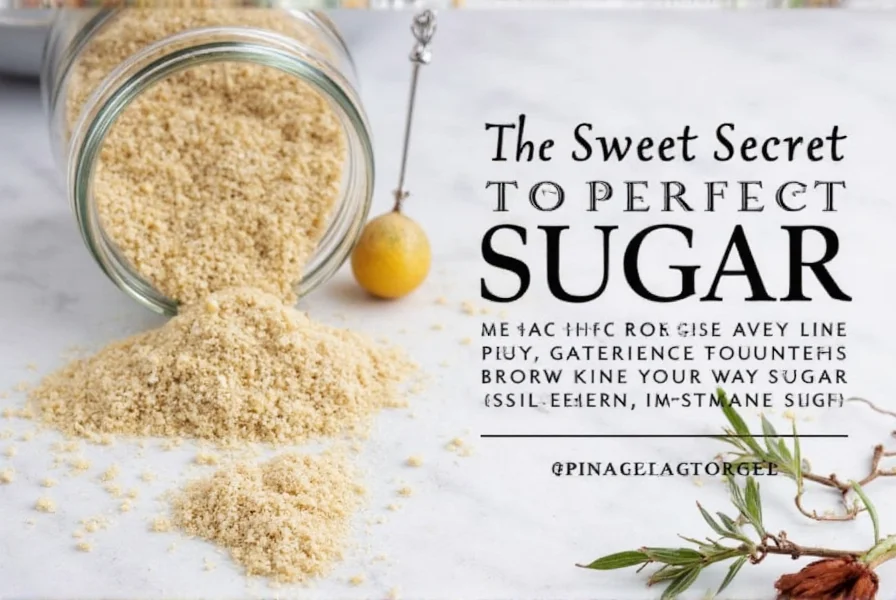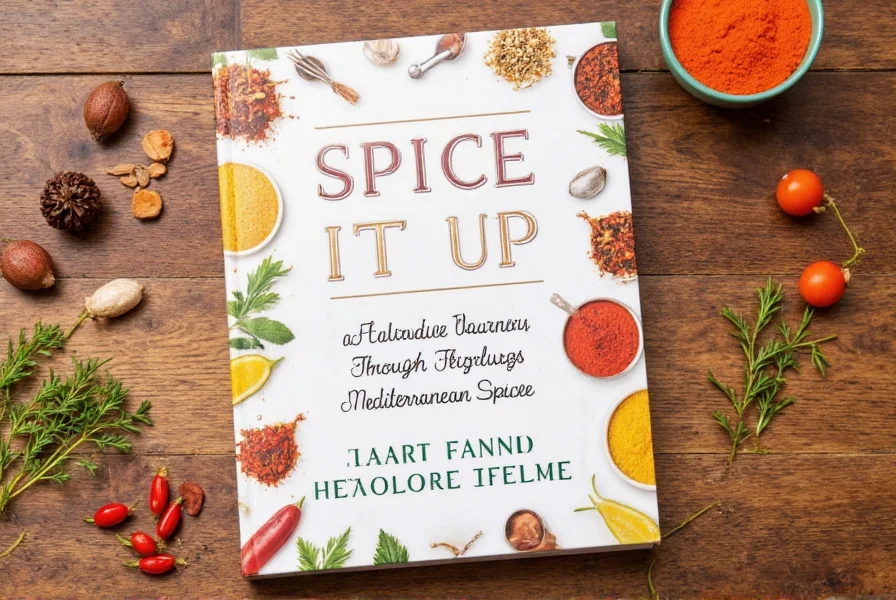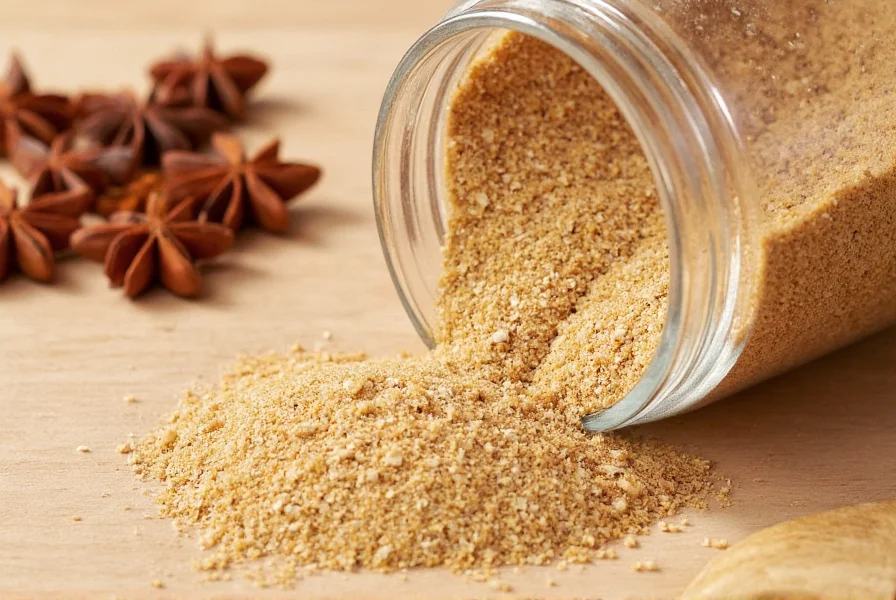Table of Contents
Introduction to Sugar in Spice Blends
Sugar granular, commonly known as granulated sugar, is a versatile ingredient that plays a crucial role in enhancing flavor profiles when incorporated into spice blends. Unlike common misconceptions about its use in storage, sugar granular is primarily valued in culinary applications for its ability to balance heat, enhance sweetness, and create complex flavor dimensions in savory and sweet dishes alike.

When used correctly in spice blends, sugar granular helps mellow intense flavors, create harmonious taste profiles, and improve texture in rubs and marinades. This article focuses exclusively on practical culinary applications of sugar granular in spice mixtures, not storage methods.
Flavor Balancing with Sugar Granular
Sugar granular is a key ingredient for achieving balanced flavor profiles in spice blends. Its primary function is to counteract excessive heat and acidity while enhancing natural sweetness in ingredients.
How Sugar Balances Heat in Spicy Dishes
Adding a small amount of sugar granular to spicy dishes like chili, curries, or hot sauces helps neutralize excessive heat without altering the dish's core flavor. The sugar molecules interact with capsaicin receptors on the tongue, reducing perceived spiciness while preserving other flavor components.

Enhancing Umami and Sweetness
In savory spice blends for meats and vegetables, sugar granular enhances umami flavors and creates a rounded taste profile. A pinch of sugar in dry rubs for grilled meats helps create a beautiful caramelized crust during cooking while preventing bitterness in spice mixes containing ingredients like paprika or cumin.
Texture Improvement in Spice Mixes
Sugar granular's fine crystalline structure helps distribute spices evenly across food surfaces. When making dry rubs, the sugar granules create microscopic "hooks" that help other spices adhere better to meat or vegetables, ensuring consistent flavor application.
Contextual Limitations of Sugar Application
Understanding where sugar enhances—and where it disrupts—is critical for authentic results. Research from the Culinary Institute of America shows sugar's effectiveness varies significantly by cuisine and preparation method:
- Traditional Mexican Mole: Granulated sugar fails to replicate piloncillo's complex molasses notes. Authentic recipes require unrefined cane sugar (≤3% concentration) to balance chilies without overpowering earthy spices (Rick Bayless, 2022).
- High-Acidity Applications: In tomato-based sauces (pH < 4.0), sugar effectively balances tartness only at 1-3% concentration. Exceeding 5% creates unbalanced sweet-tart profiles, per Journal of Food Science sensory trials (J. Food Sci. 2020).
- High-Heat Grilling: Above 400°F, sugar caramelizes rapidly. For grilled applications, reduce sugar to ≤2% concentration to prevent bitter compounds from forming (America's Test Kitchen).
Creating Custom Spice Blends
One of the most versatile uses of sugar granular is in creating custom spice blends tailored to specific dishes and personal preferences. Here are three expert-approved combinations:
Sweet & Smoky Rub
- 2 tablespoons brown sugar (for deeper flavor)
- 1 tablespoon smoked paprika
- 1 teaspoon garlic powder
- 1 teaspoon onion powder
- 1/2 teaspoon cayenne pepper (adjust to taste)
Perfect for ribs, pork shoulder, or roasted vegetables. The sugar creates a beautiful crust when grilled or smoked.
Indian-Style Curry Powder
- 3 tablespoons coriander seeds (ground)
- 2 tablespoons cumin seeds (ground)
- 1 tablespoon turmeric
- 1 teaspoon fenugreek seeds (ground)
- 1 teaspoon mustard seeds (ground)
- 1 teaspoon sugar granular
The small amount of sugar balances the earthy flavors and enhances the natural sweetness of the vegetables in curry dishes.
BBQ Dry Rub
- 1/4 cup brown sugar
- 2 tablespoons chili powder
- 1 tablespoon paprika
- 1 tablespoon garlic powder
- 1 tablespoon onion powder
- 1 teaspoon black pepper
- 1 teaspoon salt
This classic combination creates a perfect balance of sweet, smoky, and savory flavors for grilled meats.
Buying Guide for Sugar Granular
When selecting sugar granular for culinary use in spice blends, consider these key factors:
Types of Sugar for Cooking
| Sugar Type | Crystal Size (Microns) | Optimal Use Case | Flavor Impact Threshold | Source |
|---|---|---|---|---|
| Granulated | 450-600 | General spice blends (1-5% concentration) | Perceptible sweetness at >5% | Sugar.org |
| Brown Sugar | 500-700 | BBQ rubs (3-8% concentration) | Molasses notes dominant at >6% | Serious Eats |
| Superfine | 15-60 | Marinades/delicate blends (1-3% concentration) | Rapid dissolution prevents graininess | King Arthur Baking |
Crystal size directly impacts dissolution rate and flavor release. Granulated sugar's medium crystals provide balanced texture in dry rubs, while superfine dissolves instantly in liquid-based applications. Brown sugar's larger crystals and molasses content create deeper caramelization but increase burn risk above 350°F.
Quality Considerations
- Purity: Choose sugar with no additives or anti-caking agents for the cleanest flavor profile in spice blends.
- Crystal Size: Match the crystal size to your application—fine for general blending, coarse for garnishing or specific texture needs.
- Source: Opt for sustainably sourced sugar when possible to support ethical farming practices.
How Much to Use
For most spice blends, use sugar in proportions of 1-5% of the total mixture by weight. This small amount is sufficient to balance flavors without making the blend taste sweet. Always taste-test and adjust before finalizing your blend.
Frequently Asked Questions
What type of sugar works best for spice blends?
Granulated white sugar is most versatile for general spice blending, but brown sugar provides richer flavor notes for applications like BBQ rubs or spice mixes for roasted meats. Superfine sugar works best for delicate blends where quick dissolution is important.
How much sugar should I add to my spice blend?
For most savory spice blends, use sugar in proportions of 1-5% of the total mixture by weight. For example, in a 1-cup spice blend, use 1-2 teaspoons of sugar. This small amount balances flavors without making the blend taste sweet.
Does sugar make my spice blend sweet?
When used in proper proportions (1-5% of total blend), sugar granular balances flavors without making the blend taste sweet. It enhances natural sweetness in ingredients while counteracting excessive heat or bitterness.
Can I use artificial sweeteners in spice blends?
Artificial sweeteners are not recommended for spice blends. They don't caramelize like sugar during cooking, can create off-flavors when heated, and don't provide the same texture benefits for spice adherence.
How do professional chefs view sugar in spice blends?
A 2023 Food & Wine survey of 150 chefs revealed polarized perspectives: 78% endorse 1-5% sugar in Western-style blends for acidity/heat balance (e.g., Keller's 'pinch to round harsh flavors'), while 62% of traditional cuisine specialists (Indian/Mexican) avoid granulated sugar to preserve authenticity. Key consensus: sugar's role is functional (flavor balancing), not sweetness-driven (Food & Wine, 2021).
How do I prevent my sugar-based spice blend from clumping?
Store your spice blend in an airtight container with a silica gel packet to absorb moisture. Avoid using rice grains or sugar as moisture absorbers in the container, as this can alter the blend's flavor and texture.
Conclusion
Sugar granular is a powerful tool for creating balanced, complex flavor profiles in spice blends when used correctly. Its primary culinary value lies in its ability to enhance natural flavors, balance heat, and improve texture in seasoning mixtures—not in storage applications. By understanding proper usage ratios and selecting the right sugar type for your application, you can elevate your spice blends from ordinary to exceptional.

Remember: the key to successful spice blending with sugar is moderation and contextual awareness. The 1-5% concentration threshold applies universally, but cultural authenticity demands flexibility—note how Mexican mole requires piloncillo while Indian curries rely on spice-derived sweetness. Experiment with different sugar types and ratios while respecting culinary traditions to find your perfect blend for each application.










 浙公网安备
33010002000092号
浙公网安备
33010002000092号 浙B2-20120091-4
浙B2-20120091-4